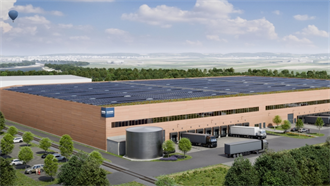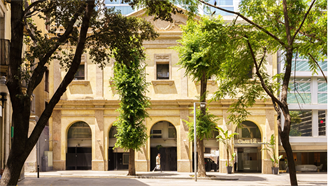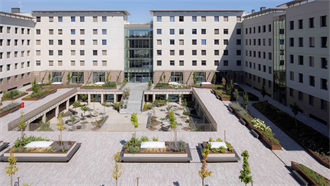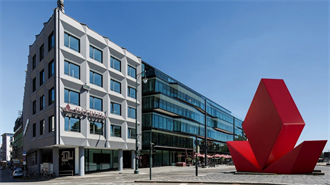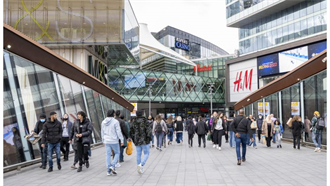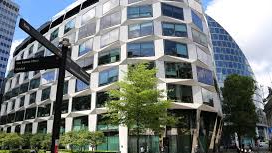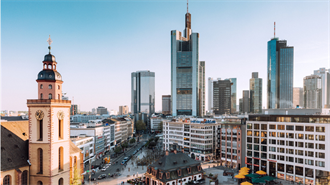It’s common knowledge that consumer-fuelled trends during the pandemic largely had a positive effect on logistics real estate.
As individuals replaced spending on services with spending on goods – and relied on 3PLs to deliver those items to their homes – warehouse take-up skyrocketed. Hard on the heels of aggressive expansion by ecommerce firms across Europe, consumers became reliant on and comfortable with online shopping – a trend which seems set to remain and lead to further growth in a number of markets.
Spain and Italy are two such territories, where experts suggest that ecommerce volumes still have space to grow from a relatively low penetration rate prior to Covid.
Notes Evert Castelein, fund manager for abrdn European Logistics Income: 'The transition from manufacturing-led to consumer-led logistics is at an earlier stage in Spain than in many other European countries, but this is changing rapidly, driven by the rise of Amazon and the substantial investment in supply chains by the major incumbent retailers.’
Amazon currently employs over 15,000 people in the country, more than double the 7,000 it employed in 2019 and it is now the biggest e-commerce player in Spain. It invested over €7 bn in its platform in Spain between 2011 and 2020, and currently operates eight fulfilment centres with more to be completed in 2022. One of these in the pipeline is at Gavilanes, Madrid, where Amazon is one of five tenants in a last mile logistics hub acquired by abrdn European Logistics Income (ASLI) in December 2021 for €227 mln.
Although completions of logistics facilities have been gradually rising since 2016, they only exceeded take-up in one of the last 13 years, Castelein notes. This has led to a gradual reduction in vacancy rates and now both Barcelona and Madrid face a shortage of available modern logistics stock. 'This is creating rental pressures and rents are rising as a result. Prior to the start of the Ukraine crisis, we had forecast total returns for the Spanish logistics market to reach 9% per annum over the next three years, driven by stable income returns and capital growth. This puts Spain fourth out of 17 markets in our logistics forecasts in Europe, over a three-year time horizon.'
Mature markets
Yet while voices on Spain remain bullish, many suggest that Europe’s more mature ecommerce markets could see certain pockets of warehouse demand flatten out.
Tasos Vezyridis, executive director, EMEA industrial & logistics and retail research at CBRE, confirms that Europe’s less developed ecommerce markets currently have the greatest need ‘for big boxes and broader logistics infrastructure’. But he says that in countries like the UK, ‘the core infrastructure is pretty much there’ while there is ‘elevated demand for urban and last mile facilities’.
Furthermore, a recent report from DWS backs the idea that the big box market may have reached a tipping point in Europe’s established online shopping areas. The research describes core European logistics net absorption figures for 2021 as potentially ‘artificially elevated due to a temporary shift in consumer spending on goods’. The report says: ‘If net absorption would revert back to the 5-year average, the much higher levels of speculative supply could pose a risk and create upward pressure on vacancy rates.’
The retailers themselves are already re-examining their warehouse requirements where they have grown the fastest. In the UK, Amazon is understood to be planning to moderate the level of future logistics floorspace. Globally, the firm’s logistics costs have risen 1307% to $151.8 bn (€136.3 bn) in the past 10 years, and the firm’s CFO, Brian Olsavky, has been probing expenses in the light of a profit warning Amazon made in May.
Other key retailers with omnichannel capabilities are scrutinising the utility of their stores once more as vehicles to fulfil online orders. Swedish furniture giant Ikea is one such firm, which has recently unveiled plans to spend over €3 bn by the end of 2023 to modify new and existing stores to support its ecommerce needs, in a shift away from warehouse reliance.
The plans effectively mean that many out-of-town Ikea stores will double up as online distribution centres in the future, which Ikea says will cut delivery times in half for consumers and lower delivery costs by up to 40%. Initial projects have included a redesigned store in Kuopio, Finland, and the first brand new, fully ecommerce-ready Ikea store which opened in Nice in May.
Says Tolga Öncü, retail operations manager at Ingka Group: ‘With this investment, we aim to secure the long-term viability of our business by making Ikea more accessible, more affordable and more sustainable. We see many of our stores playing a dual role, giving our customers the best of both physical and online retailing and the investment will support not only an inspiring in-store Ikea experience but also a faster and more affordable shipping of online orders directly from our stores.’
Vezyridis sees a similar trend from supermarket operators. ‘Pre-Covid, they often relied on in-store picking, and then gradually moved to dedicated facilities as demand increased. But with the current cost pressures, many are reconsidering placing their stores at the heart of ecommerce fulfilment.’
Inflation, and other stories
While retailers like Ikea are bracing themselves for shifts in elective spending, they are also contemplating a real risk of spending falling outright as the spectre of recession returns to Europe in a year of war. Inflation is already in double digit figures in several European nations at time of writing. And the rising costs affect everyone along the ecommerce supply chain – from garment, electronics and food manufacturers up-stream, to the fuel costs of 3PLs and courier firms. Meanwhile, consumers hard pressed by energy prices and the impact of stagflation are starting to click less.
With retailers accounting for around half of all logistics tenants, the fortunes of the high street – and consumption patterns in general – have become of central importance for warehouse owners. Nevertheless, ecommerce as an acquisition mechanism is here to stay, and is part of the sector’s ‘resilience’, most concur.
CBRE has estimated that for every additional £1 bn of online spend, around 1million ft2 of logistics space is needed to fulfil delivery. And even a market like the UK, which currently has the third highest e-commerce penetration ratio globally at 24% - with annual online expenditure of nearly £100 bn – is still forecast to climb to 32% by 2025.
‘Even if consumption trends soften in the current climate, we expect the continuing expansion of ecommerce to compensate somewhat for that in matters of take-up,’ says JLL’s Lisa Graham. ‘It’s a key factor for the resilience of the logistics sector, and is earmarked for further growth.’




























